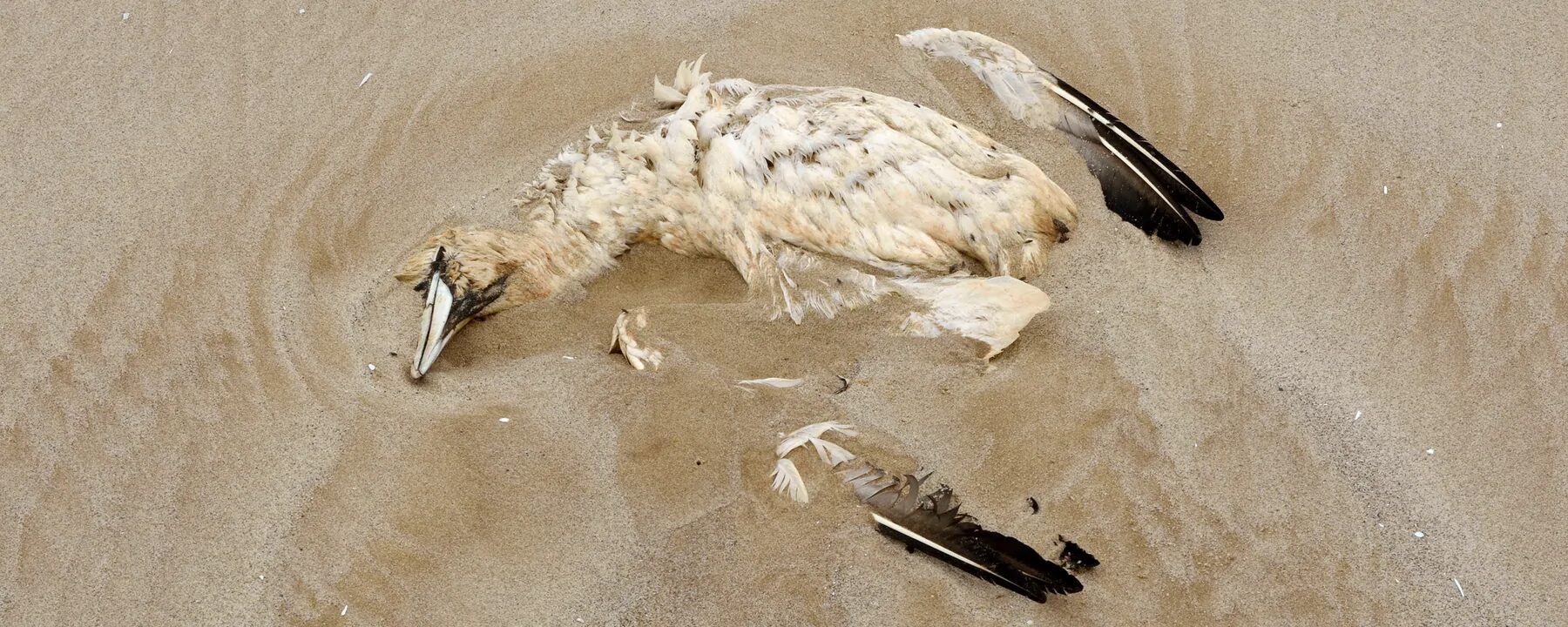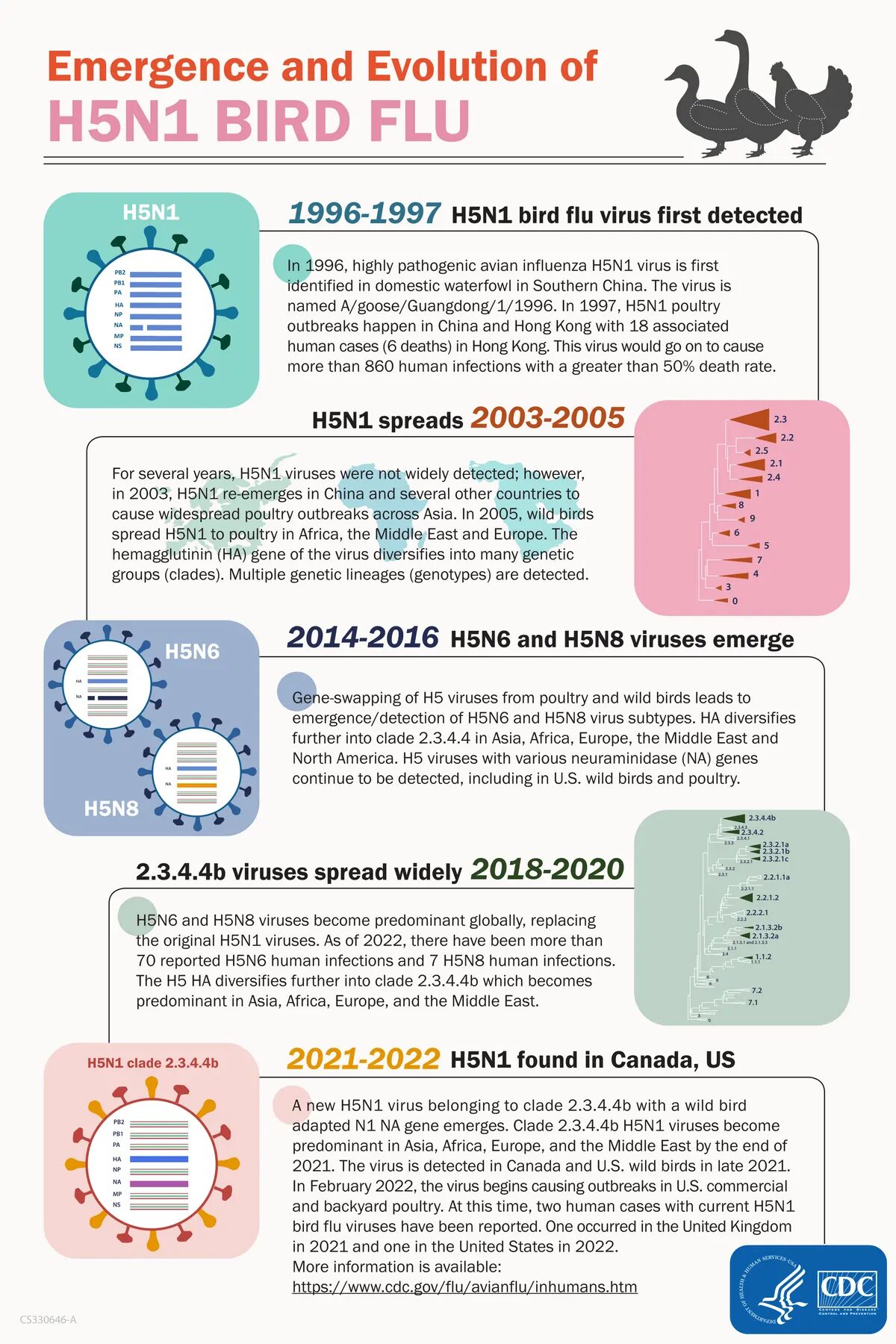
A highly pathogenic strain of H5N1 influenza, also known as avian flu, that plagued Europe and North America all summer shows no signs of relenting, officials warn. More than 2,600 outbreaks have been reported among domesticated flocks, as well as more than 3,500 cases in wild birds from 37 European countries, according to the latest overview of the epidemic from European Food Safety Authority (EFSA).
"I'm a scientist by training, and like all scientists, I'm used to taking a measured approach and don't take the language I use lightly," Jeff Knott, director of policy for the UK conservation charity, the RSPB, tells National Geographic. "But the severity of the situation and scale of the impact is unprecedented and very, very scary. It's a huge crisis that could turn into a catastrophe unless we get ahead of it."
The strain, a clade of H5N1 highly pathogenic avian influenza called 2.3.4.4b that emerged in the early 2010s, usually follows a seasonal cycle, with infections detected in winter and case numbers dropping off by summer. This year, however, things were different. Mass deaths of seabirds in spring foreshadowed a record-breaking summer, with the number of outbreaks from June to September five times higher in 2022 than during the same period in 2021, The Guardian reports. And for the first time, the virus spread along migration routes to North America, the EFSA states in a news release.
Comment: Bearing in mind the manipulation of Covid statistics to further the lockdown agenda, it begs the question as to just how accurate these statistics and declared outbreaks are.
"Unfortunately we expect the number of cases to continue to rise over the coming months as migratory birds return to the UK, bringing with them further risk of disease that can spread into our kept flocks," Christine Middlemiss, the UK's chief veterinary officer, says in a statement.
The scale of the epidemic has experts concerned that the infection has become an endemic, year-round risk to birds, Reuters reports. According to Knott, more than 60 species of birds, including raptors, have tested positive for the virus, as have some wild mammals. In the US and Canada, infections have been detected in marine mammals and terrestrial carnivores, the EFSA notes in its overview, raising concerns that the virus "may adapt further to mammals."
Comment: Cases were 'detected', but were these mammals showing any signs of ill health? Because, as with Covid, oftentimes people wouldn't have known they were infected were it not for the faulty tests. Moreover, it's now clear that the impact of lockdowns has caused many times more harm to people's health, and to society overall, than Covid ever could.
As for 'further adaptation', that remains to be seen. Because real world transmission is still relatively poorly understood, and scientists are showing a worrying tendency towards hysteria: Deadly ebola-like virus SHFV 'poised for spill over' into humans, new study claims
Still, according to the EFSA, the risk to the general public's health remains low, and the risk from consuming poultry is "negligible."
Comment: Even with China's massive population, farming practices, as well as the number of wild and farmed birds there, it reported just 2 deaths associated with bird flu at the end of last year.
Those working with birds are at increased risk of exposure and should continue to take precautions, director of European Centre for Disease Prevention and Control Andrea Ammon tells the BBC. "Vigilance is needed to identify infections with influenza viruses as early as possible and to inform risk assessments and public health action," she adds.
See "Predicting Future Zoonotic Disease Outbreaks"
CDC (PDF VERSION)




Comment: Whilst it may be true that incidents of bird flu outbreaks may be on the rise - and in no small part thanks to factory farming practices that slowly destroy the health of livestock - it's also true that at least some of these declared outbreaks seem to serve another agenda, which is to cause deadly disruptions to the food supply: